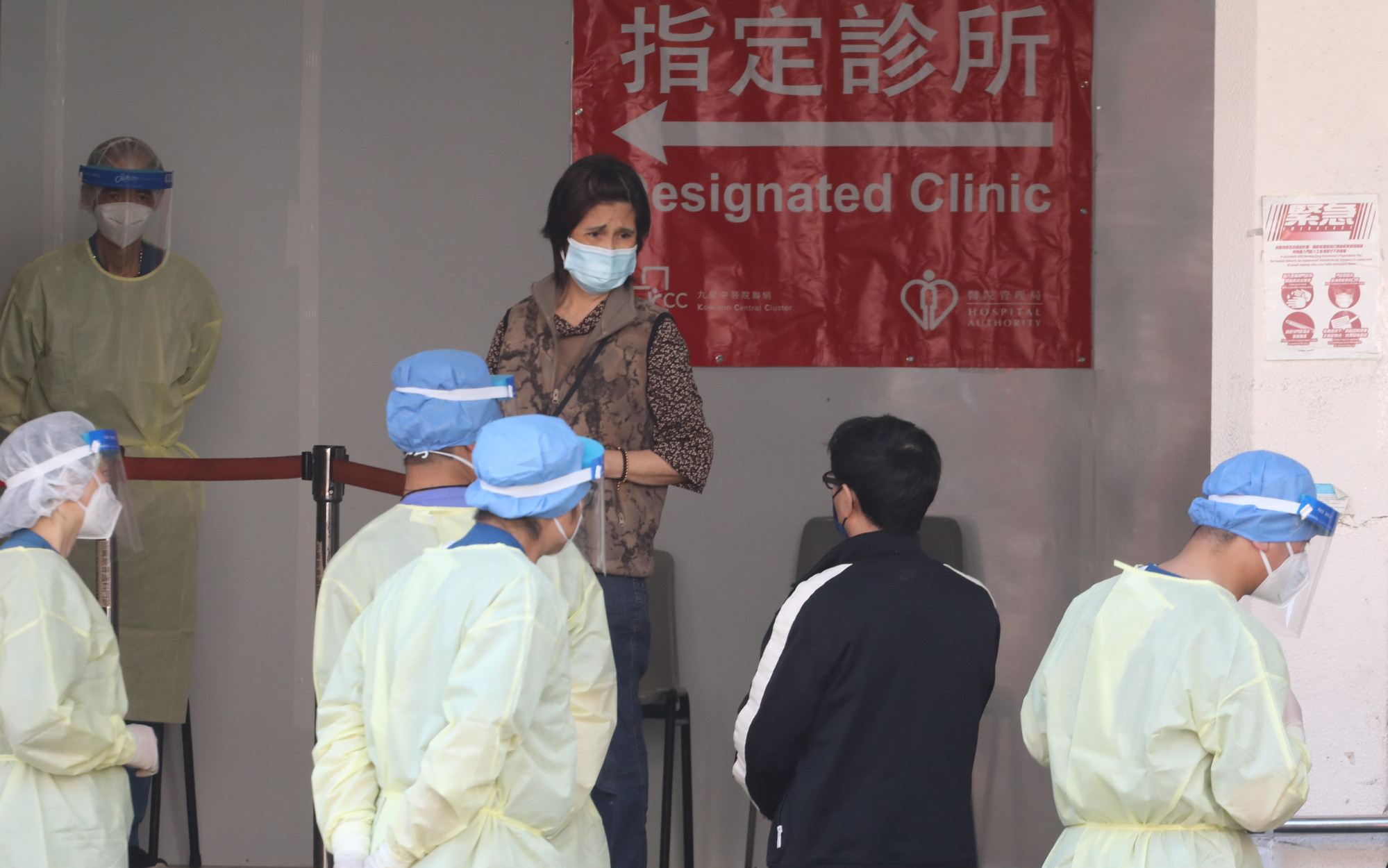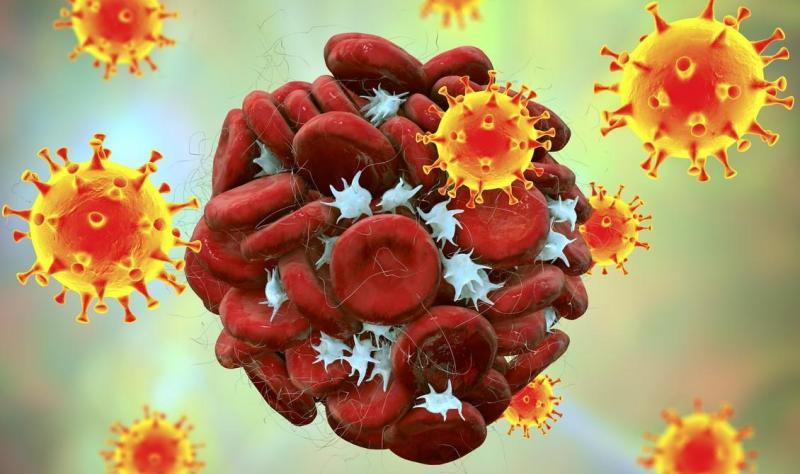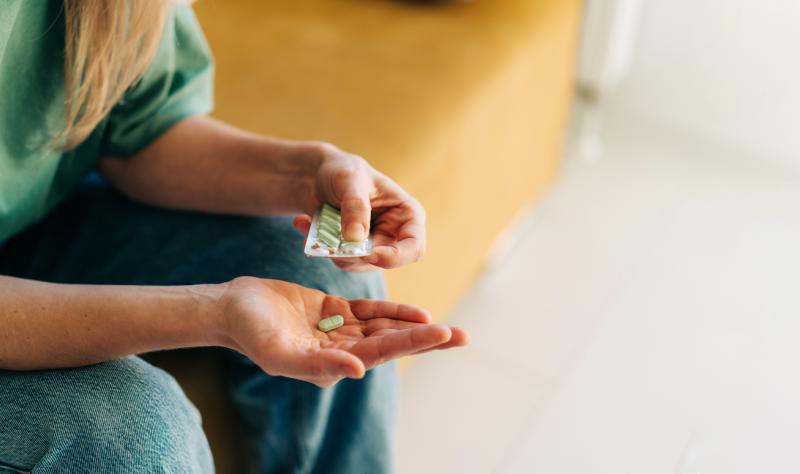No Covid-19 nightmare ahead for Hong Kong, experts agree
No Covid-19 nightmare ahead for Hong Kong, experts agree South China Morning Post

He said there was a level of immunity in the population as so many residents had already had Covid-19, and in terms of managing the surge, the government was better prepared this time.
On September 1, health officials reported 10,586 Covid-19 infections, the first time since March 25 that Hong Kong was back in five-digit territory.
The fifth wave which began in January crossed the 10,000 mark on February 25 then shot up to tens of thousands of cases daily over the following weeks.
University of Hong Kong epidemiologist Professor Benjamin Cowling said that unlike early in the year, infections were unlikely to continue rising sharply and swiftly.
Cowling pointed out that curve of infection was flatter this time. This meant the virus was spreading more slowly than it did in January and February, when infection numbers sometimes doubled each day, for example, leaping from 625 on February 8 to 1,161 the next day.
And while it took only 17 days for the daily number to shoot up from the thousands to tens of thousands in February, it took 79 days this time.
Hong Kong was also seeing a much lower number of deaths and people seriously or critically ill in hospital now.
On February 25, when infections surged past 10,000, there were 5,050 Covid-19 patients in hospital, including 188 critically ill and 331 seriously ill. There were an average of 37.7 deaths a day over the week before.
In contrast, there were 2,627 in hospital on September 1, with 48 in critical condition and 54 seriously ill. The week before saw an average of 8.2 deaths a day.
Cowling said: “In February, we passed 10,000 on the way to 100,000 per day. This time we passed 10,000, but we are not on the way to 100,000 per day.”
Leung suggested that the government expand intermediate care facilities to take in more patients with mild symptoms, reducing the burden on public hospitals and continue boosting vaccination among the young and old.
‘No more than 20,000 cases a day’
As of September 1, Hong Kong’s total recorded Covid-19 infections stood at 1,561,290, with 9,709 related deaths. Researchers have estimated that the actual number of infections could have been as high as 4 million out of the city’s population of 7.5 million.
Immunity acquired from previous infection during the fifth wave appears to have shielded Hongkongers from the worst.
The earlier wave was driven mainly by the Omicron subvariant BA.2 of the coronavirus. Health officials said the more transmissible BA.4 and BA.5 subvariants were behind the recent rebound, but experts said there was no evidence that they caused more severe illness or death.
Even though BA.4 and BA.5 were able to reinfect those who had previously contracted BA. 2, the reinfection rate remained at a low of 1.5 per cent, according to the Centre for Health Protection.
Despite a fresh surge of Covid-19 infections, Hong Kong is seeing a much lower number of deaths and people seriously or critically ill in hospital this time round. Photo: Jelly Tse
Government pandemic adviser Professor David Hui Shu-cheong said: “If the BA.5 wave peaks in September and then drops, the vaccination rate keeps rising, and we continue to see more cases with mild symptoms and few severe cases and deaths, then we will have the conditions to reopen gradually.”
Based on Singapore’s experience, with its current wave driven by the BA.4 and BA.5 subvariants peaking at about half its previous outbreaks also in February, Hong Kong is likely to record no more than 20,000 cases a day this time, he reckoned.
Assistant professor Siddharth Sridhar, a clinical virologist at the University of Hong Kong, saw no reason for the city to relive dreadful scenes of elderly patients lying on beds in open areas outside overcrowded public hospitals after care homes sent even mildly ill residents there early this year.
“If we continue to hospitalise a lot of mild Covid-19 cases, the Hospital Authority cannot cope,” he said. “Diverting a huge amount of resources to deal with just one single respiratory infection means that the care of other conditions will automatically deteriorate because of the crunch in ward space and healthcare staff.”
[embedded content]
With general wards in public hospitals being converted to isolation wards, medical staff had to take care of Covid-19 patients only, worsening the manpower shortage and depleting resources to treat other patients.
He suggested placing Covid-19 patients in general wards, away from other patients, and using air filters to reduce transmissions, so that the staff could serve both types of patients.
Patients with weak immune systems as a result of serious health issues could be isolated in designated facilities to keep them safe from the virus.
In the long term, he said, no healthcare system in the world could turn on “full-blown precautions” to deal with every Covid-19 surge.
“We need to normalise Covid-19 management in the healthcare setting,” he said.
‘Great pandemic fatigue in society’
Hong Kong’s current administration has signalled that the recent rise in infections was unlikely to result in the harsh restrictions put in place amid the fifth wave.
City leader John Lee Ka-chiu repeated several times in recent days that he would seek to “achieve the best outcome with the least cost to society”, stressing that it did not mean doing nothing.
On August 26, Secretary for Health Lo Chung-mau unveiled a package of targeted measures, including compulsory quarantine for elderly Covid-19 patients at official facilities and required rapid antigen tests for groups of more than eight at restaurants.
There would be no change to the relaxed measures allowing travellers arriving from overseas to quarantine for three days at a hotel and four days at home, as that had not led to a rise in imported infections, he said.
The government’s measures this time stood in sharp contrast to the harsh curbs imposed on January 6, which involved suspending evening dining inside restaurants and shutting cinemas, gyms, theme parks, bars and pubs among a host of entertainment venues. Those restrictions lasted almost four months until April 21.
Most health experts who openly backed those tough measures at the time now support sticking cautiously to the course of reopening.
“There is great pandemic fatigue in the general public and the economy really can’t take any more lockdown measures,” said government pandemic adviser Professor Lau Yu-lung.
“Hongkongers want to get their normal lives back, which is why we hope to do no more than urge everyone to get triple vaccinated, and hopefully get past this wave with our healthcare system and the vulnerable largely unscathed.”
Former Hospital Authority chief executive Dr Leung Pak-yin and government pandemic adviser Professor Yuen Kwok-yung said they opposed any move to tighten social-distancing or quarantine measures.
Like other experts, they said that this time, it was more important to raise the vaccination rate for the elderly and infants in particular and make access to Covid-19 drugs and treatments easier.
People wearing protective face masks queue up for the Sinovac vaccine at Kwun Chung Municipal Services Building on September 3. Photo: Edmond So
As of Monday, 81.15 per cent of people aged 70 to 79 and 67.4 per cent of those aged 80 or older had received two doses of vaccine. While this was an improvement from February, the number of elderly people who had received their third and fourth booster jabs remained low.
For children between six months and three years old, the take-up rate was 13.06 per cent since vaccination began four weeks ago after a 22-month-old girl who contracted Covid-19 died, leading to the vaccine age being lowered.
Among patients in hospital, about half had not received their third dose of vaccine and about 20 per cent had not been vaccinated at all.
After a large number of elderly succumbed to the virus during the fifth wave, authorities embarked on a drive to vaccinate the elderly, including through a door-to-door vaccine scheme.
On Saturday, Hospital Authority’s chief executive Tony Ko Pat-sing described the inoculation campaign as a “race against time”, citing latest figures of inpatients where about half had not completed three-jab vaccination, while about 20 per cent had not been vaccinated at all.
As a large number of elderly succumbed to the virus during the fifth wave in February and March, authorities had been pushing the inoculation rate among elderly through outreach programmes at care homes and door-to-door schemes.
Pandemic expert Hui said his latest research showed that the more widespread use of antiviral drugs in treating Covid-19, particularly Paxlovid, had helped lower the need for hospitalisation by more than 20 per cent.
He said the health authorities could avoid stressing the healthcare system by reducing hospital admissions as much as possible.
They could do this by allocating adequate resources, in particular sufficient outpatient clinic settings and the timely use of antiviral treatment, he added.
Government adviser Lau said: “For now, Hongkongers should reduce social mixing if possible, and brace themselves for a September wave of infections.
“Get vaccinated now if you still haven’t completed three jabs. If severe and death cases stay steady, we will hopefully see daily infections come down by the end of the month.”



